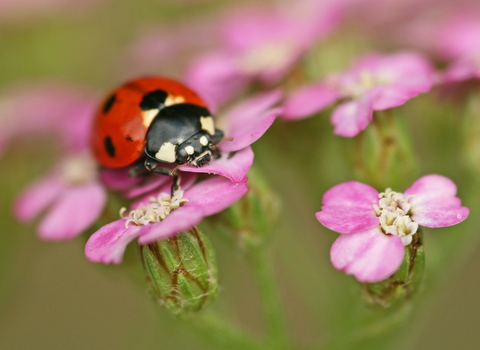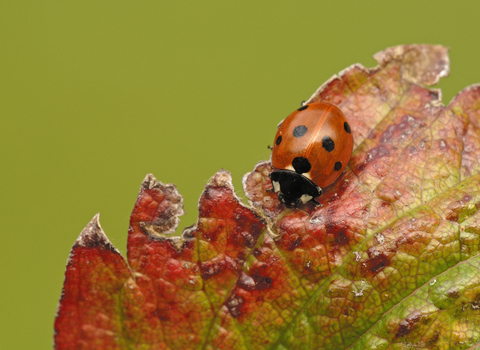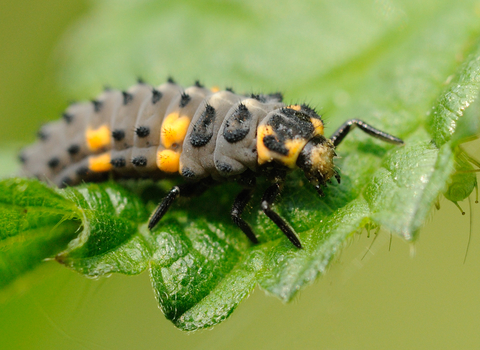
7-spot Ladybird ©Rachel Scopes

7-spot Ladybird ©Dawn Monrose

7-spot Ladybird larva ©Amy Lewis
7-spot ladybird
One of our most common ladybirds, the black-on-red markings of the 7-spot ladybird are very familiar. Ladybirds are a gardeners best friend as they eat insects that love to nibble on garden plants! You can encourage them into your garden by putting up a bug box.
Scientific name
Coccinella septempunctataWhen to see
March to OctoberSpecies information
Category
Statistics
Length: 6-8mmCommon.
About
You’ve probably spotted the 7-spot ladybird many times as they are the most common of our ladybirds. They are found in gardens and parks – or anywhere there are aphids for it to feed on. Adults hibernate in hollow plant stems, sometimes clustering together in a large group. Not only do we have native 7-spot ladybirds in the UK, but there is also a species who migrate to the UK every spring from warmer climates. The bright colours of ladybirds warn predators that they taste horrible, although some birds will still have a go!How to identify
The 7-spot ladybird is easily recognised by its red wing cases, dotted with a pattern of seven black spots; it also has a familiar black-and-white-patterned thorax.Distribution
Widespread.In our area
We'd love to know if you've seen a 7-spot ladybird in Worcestershire. Please take a photo and let us know where and when you took it via our short wildlife sightings form. Thank you!
Did you know?
The bright colours of ladybirds warn predators that they are distasteful, although some birds may still have a go at eating them. As well as their warning colouration, ladybirds also have another defence mechanism: when handled, they release a pungent, yellow substance from their joints (a form of 'controlled bleeding') that can stain the hands.Watch
We'd love to know if you've seen a 7-spot ladybird in Worcestershire. Please take a photo and let us know where and when you took it via our short wildlife sightings form. Thank you!
